As excitement builds for the Cape Canaveral launch of Michigan Technological University's student-built nanosatellite, it's clear how thoroughly Huskies have infiltrated the aerospace industry.
With more than 800 alumni, 106 current team members and one award-winning satellite — Oculus-ASR, which is set to ride the SpaceX Falcon Heavy rocket into low earth orbit in late June — Michigan Tech's Aerospace Enterprise is a proven conduit to space. The eyes turned to the sky later this month encompass nearly two decades of the University’s spacecraft program.
Huskies Ahead of the Curve
Commercialization is driving aerospace expansion across the nation and in Michigan, which is ranked among the top 10 states in aerospace manufacturing attractiveness by PricewaterhouseCooper. But the presence of Michigan Tech alumni in national labs, prominent public and private institutions, and noteworthy startups is more than a reflection of the industry's current exponential growth.
"We were ahead of it," said Aerospace Enterprise Advisor and Director Brad King. "This new boom is really only five to seven years old. We certainly were feeding it and played a part in causing it."
"MTU’s products — which are our graduates — are out there, making this happen."
Alumni and current students work and intern at national labs, like Los Alamos and Pacific Northwest. A case in point: Michigan Tech students made up 40% of a major government space laboratory’s co-op program in summer 2018. A Space Dynamics Laboratory (SDL) representative attended an Aerospace Enterprise Team briefing in January 2018. The federally funded research center, which is sponsored by the Missile Defense Agency and works with the U.S. Department of Defense, NASA and industry was so impressed that it returned with a recruiting team.
"Nine of the 22 co-ops at SDL during summer 2018 were Michigan Tech students," said King. "I believe eight received full-time job offers."
Aerospace Enterprise Program Manager Marcello Guadagno, a mechanical engineering major, is currently interning at SDL.
"Joining the Enterprise has provided direction for my degree. It gave me the opportunity to develop technical knowledge and professional skills far beyond what can be attained in a classroom," said Guadagno, who previously interned for Orbion Space Technology and NASA's Wallops Flight Facility.
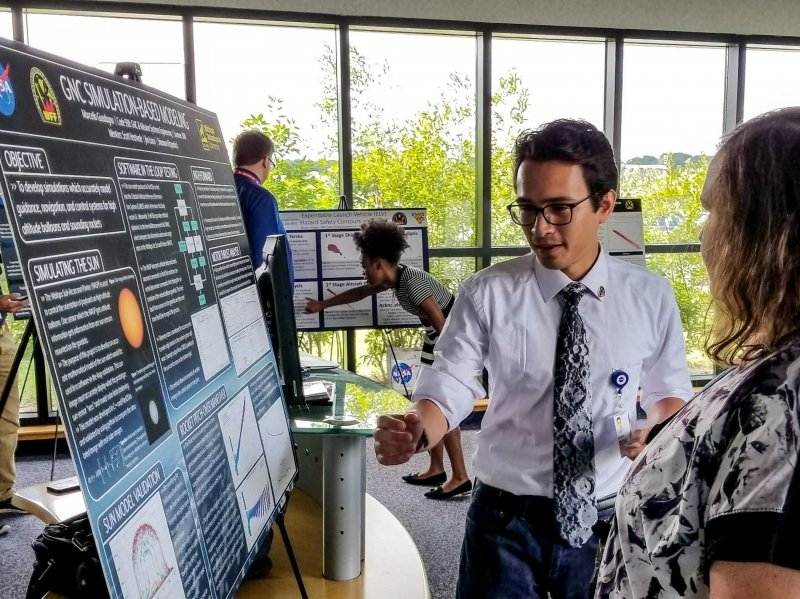
Michigan Tech Aerospace Enterprise alumni are engineers, managers, technology officers and research scientists in a diverse array of aerospace-related industries and institutions, from the U.S. Army, U.S. Air Force and NASA to SpaceX. Alumni are found at startups and major manufacturers. Like Oculus-ASR itself, there's nowhere for the program and its alumni to go but up.
"While I do not now know what lies ahead for me, I am certain that whatever I do will always be tied to space."
Or as Sam Baxendale, staff systems engineer at the Air Force Research Laboratory (AFRL) at Kirtland Air Force Base more aptly puts it, "Not even the sky is the limit."
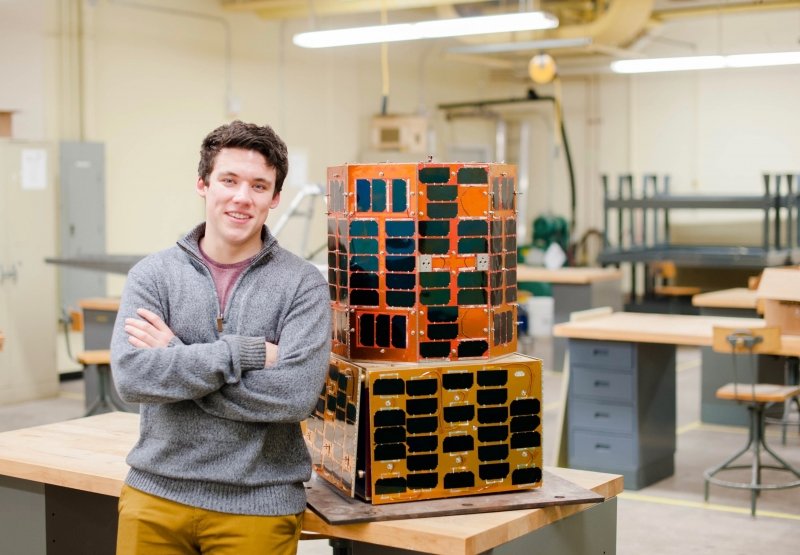
Baxendale led assembly, integration and test (AI&T) of Oculus-ASR from 2015 to 2017 while earning dual majors in mechanical and electrical engineering — and, like fellow Aerospace Enterprise teammates, perhaps spending more time in the Mechanical Engineering-Engineering Mechanics building (MEEM) than most. The launch, part of the Department of Defense Space Test Program-2 (STP-2), experienced numerous delays. When the call came to prepare it for the final phases, it was May 2017 and most students had departed for the summer.
"A small group of us were responsible for taking Oculus to the finish line," Baxendale said. "We spent long days and nights in the labs while we worked to button up Oculus. We managed to pull off everything the Air Force wanted us to do.”
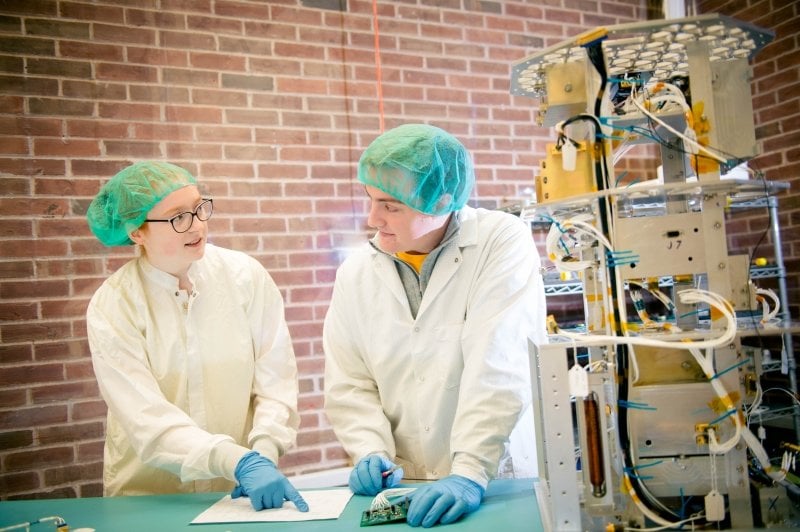
"The reason I came to Michigan Tech was because of Oculus," Baxendale said. "When I was a senior in high school I came up for a tour. The guide spent a lot of time showing me the Enterprise (lab) in the MEEM. I was kind of blown away that students were working on a satellite."
The University Nanosatellite Program is managed by AFRL and funded through the Air Force Office of Scientific Research (AFOSR). Tech has participated for 15 years, winning first place once and third place twice. Baxendale isn’t the only Husky at AFRL — there are several, including 2017 graduate Jesse Olson, a mechanical engineering-engineering mechanics major who was hired as a program manager a little over a year ago.
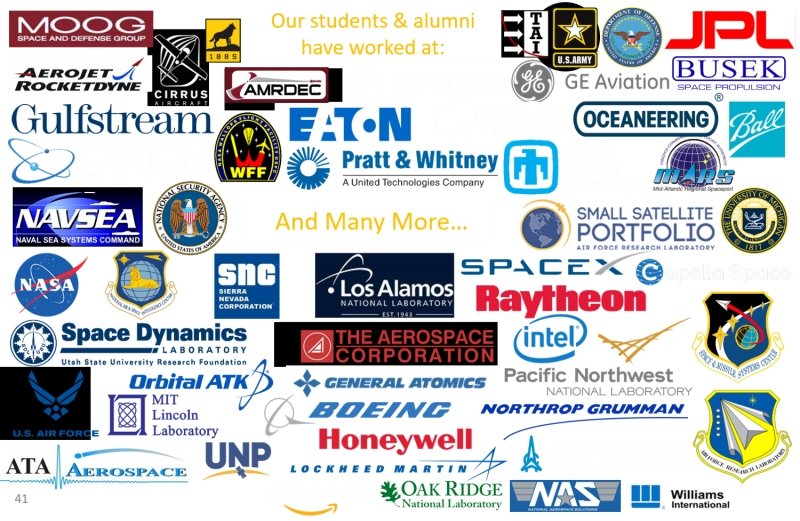
Hands-on, Hands Off—and Jazz Hands
Michigan Tech's one-of-a-kind Enterprise program, spanning 20 years and more than 25 teams working on real projects and products with researchers and companies, provided the overarching framework for the Aerospace Enterprise.
Like all of Michigan Tech's Enterprise Teams, Aerospace is interdisciplinary — currently six STEM (science, technology, engineering and math) fields are represented on the team. The group, which has its own marketing division (and some really cool stickers) also welcomes students with communication and business expertise.
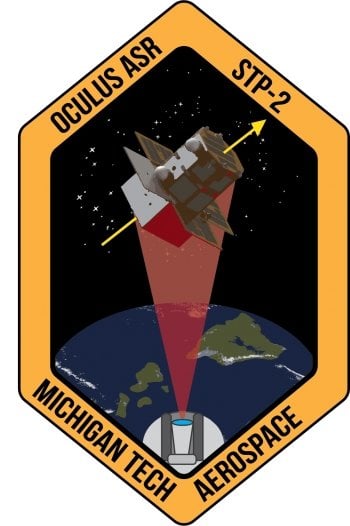
"It's important for students to learn how to work in an interdisciplinary group. In the workplace, they will never be on a team where every member has the same expertise,” said King. “To design, build, manage and operate a satellite requires mechanical, electrical, computer science, physics, materials, everything — it really crosses a lot of boundaries and prepares them for a career."
"It's a great fit for the whole campus. We don't just live in one department."
Guadagno said the upcoming launch is a harbinger of both past dedication and a bright
future.
"Over a decade has passed since the first students designed the Oculus mission to
those who completed its final integration,” said Guadagno. “While their ages and experiences
differ, the opportunity to develop spacecraft has given all alumni a knack for innovation
and an appetite for challenge. They can now be found everywhere from Disney to NASA."
For Aerospace Enterprise alumnus Jeff Katalenich, a research scientist and Linus Pauling
Postdoctoral Fellowship recipient at the Pacific Northwest National Laboratory, the
launch celebration harkens back to another of life’s milestones: Oculus went to his
August 2013 wedding.
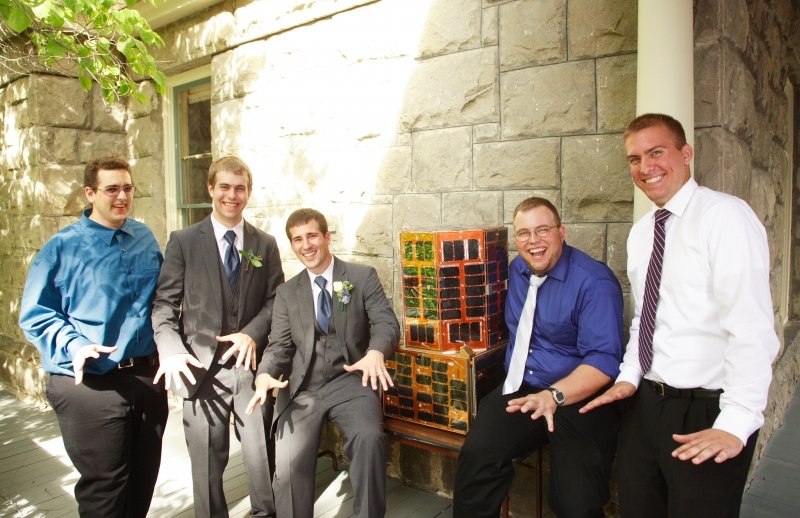
The original Oculus — which was not a flight unit at that time — made the trip from Houghton to Boise, Idaho in the back of a minivan. “I was pretty surprised on my wedding day when Aaron Wendzel announced that he had the satellite in the back of the van and wanted to know where to put it at the venue,” said Katalenich, who graduated in 2009 with a BS in mechanical engineering and earned his PhD in nuclear engineering at the University of Michigan in 2014. “Since Tech, my research has focused on developing better ways to process plutonium-238 fuels, which are used in radioisotope batteries for NASA space exploration missions.”
Katalenich was lead for the Enterprise’s guidance, navigation and control (GNC) team, then served as nanosatellite project manager for two-and-a-half years. “The experiences I had and lessons I learned were the most valuable parts of my undergraduate years. I owe a great debt of gratitude to Brad King for everything he taught me and to my team leaders, who put everything they had into making the nanosatellite project a success. I hope that the program lives on and that new generations of engineers at MTU burn the midnight oil just like we did,” he said.
The Nanosatellite’s Mission(s)
Oculus-ASR is only 150 pounds and a bit taller than a mini-fridge, but has large ramifications for improved space surveillance of the more than 10,000 objects that orbit the Earth.
It's the first small satellite deployed from the SpaceX Falcon Heavy (and will be the Heavy's first night launch). Air Force telescope operators will observe Oculus from the ground during its nine-month mission and use the satellite as a cooperative practice target. By imaging and studying Oculus, they can better understand how ground imagery can be used to interpret a satellite’s actions and intents.
Baxendale, who was hired by AFRL, followed Oculus-ASR out to its testing grounds (where the satellite underwent the “shake and bake” simulations that ensure its space worthiness). He kept an eye on Oculus' progress, but didn't directly work with it. "The satellites I'm working with now are technically similar to Oculus, but programmatically much larger," he said.
I'm really happy to see Oculus getting on that launch pad," Baxendale said. "It's a massive achievement for all the Michigan Tech students who worked on it over the years."
But like so many things in life, the Oculus project isn't about meeting a singular goal. It's about the journey.
"The real point of Oculus was to teach students something," Baxendale said. "Michigan Tech has a really unique educational structure: it's hands-on, not hand-holding. Dr. King and AFRL provide excellent mentoring and high-level direction, but they do not give students all the answers. It's up to the students to figure it out,” he said.
"There are other universities that build satellites — at any given time hundreds are working on them, and there are experts standing by who can take over,” he said. “At Michigan Tech, we work in small teams, which forces you to take on more responsibility. You’re thrown off the deep end. It was hard, but worth it. There’s no way I would be able to do the job I’m doing right now if I didn’t have the experience with Oculus and the other Enterprise projects."
Baxendale is referring to two Michigan Tech spacecraft in the design and development phase: Auris and Stratus. Like Oculus, the Auris microsatellite is funded and managed through the University Nanosatellite Program. It will monitor and attribute telecommunications signals in a congested space environment. Stratus, funded by NASA's Undergraduate Student Instrument Program and the CubeSat Launch Initiative, is a miniaturized satellite that will image atmospheric clouds to reconcile climate models.
"As we start working on more of these in the future, we’re building heritage. It’ll be faster and easier. It will still be student-focused problem solving."
Guadagno shares the vision. “Oculus will be the first of many; Auris and Stratus are soon to follow. In due time, our trio of satellites will be shooting across the sky.”
Michigan Technological University is a public research university founded in 1885 in Houghton, Michigan, and is home to more than 7,000 students from 55 countries around the world. Consistently ranked among the best universities in the country for return on investment, Michigan’s flagship technological university offers more than 120 undergraduate and graduate degree programs in science and technology, engineering, computing, forestry, business and economics, health professions, humanities, mathematics, social sciences, and the arts. The rural campus is situated just miles from Lake Superior in Michigan's Upper Peninsula, offering year-round opportunities for outdoor adventure.

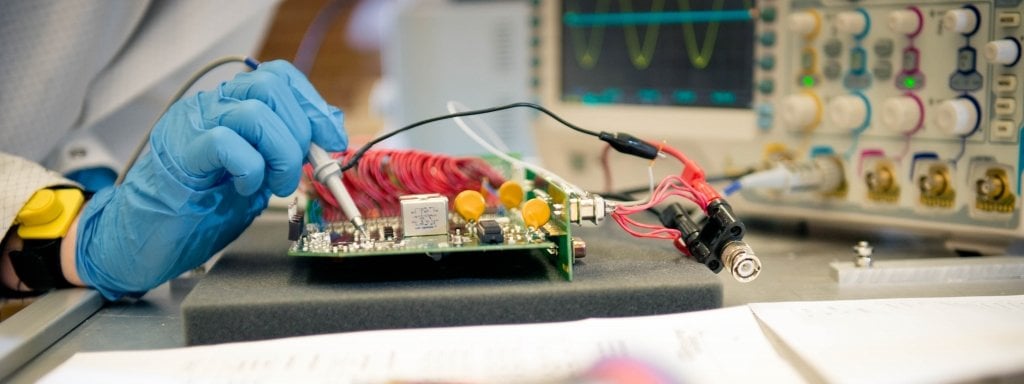
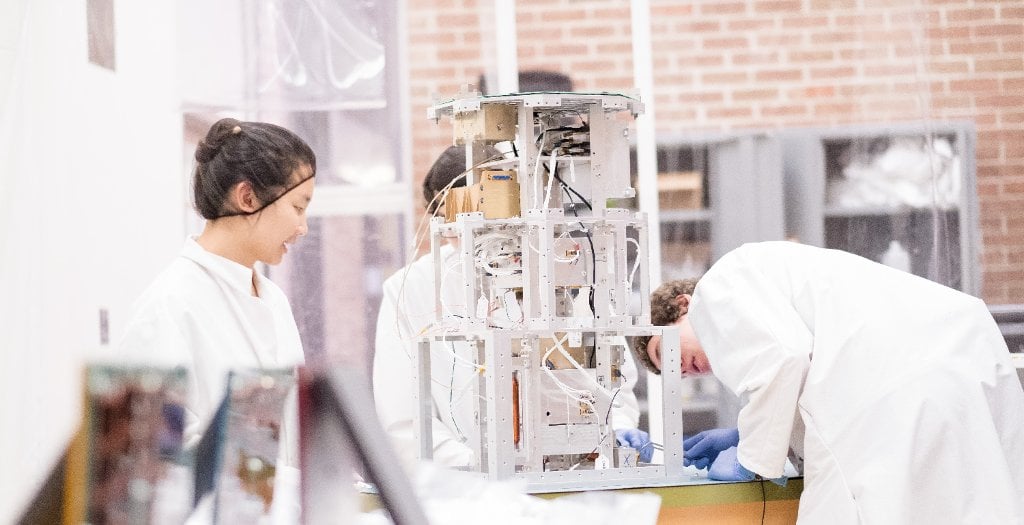
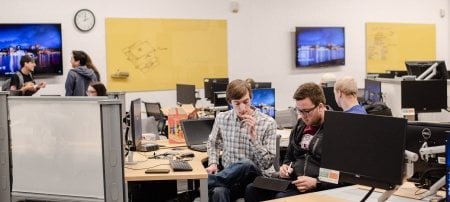
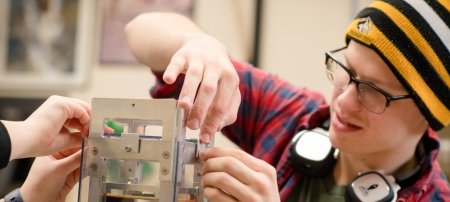
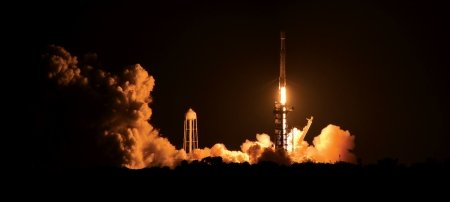
Comments